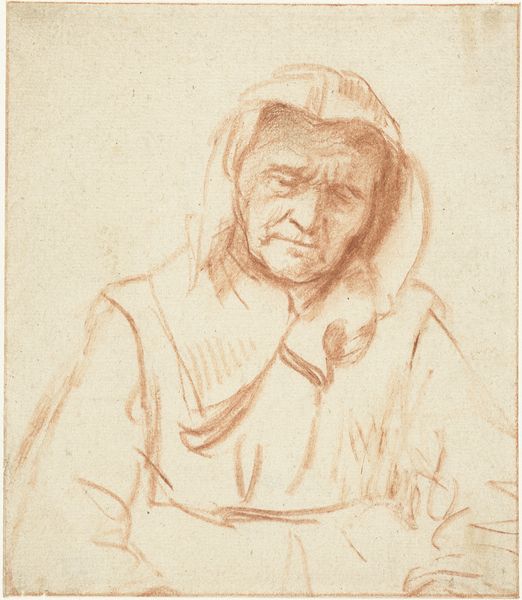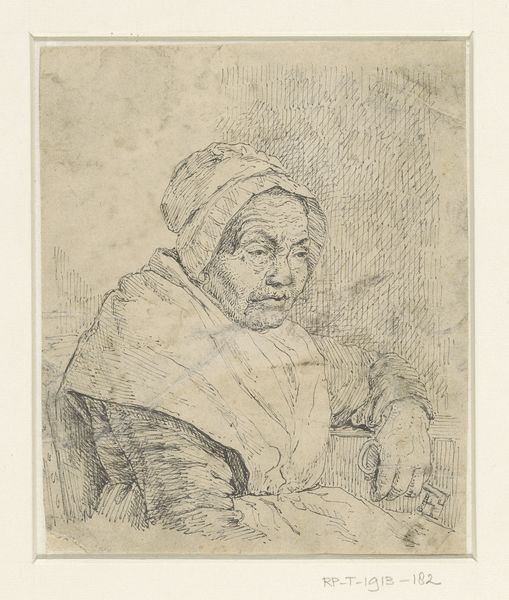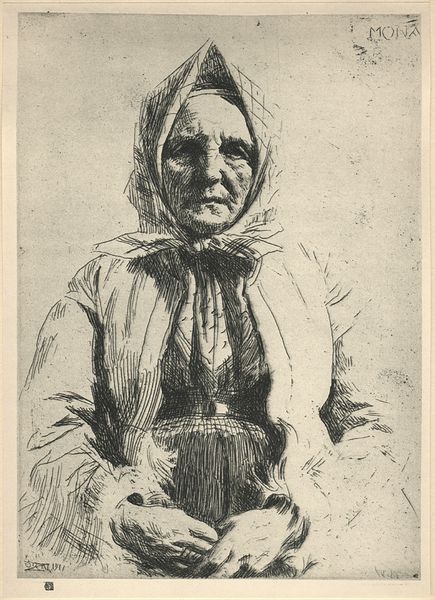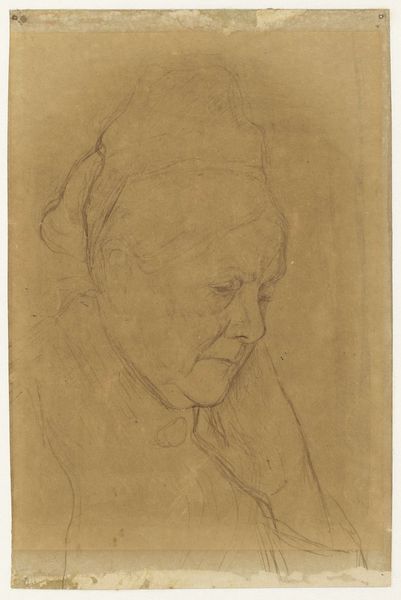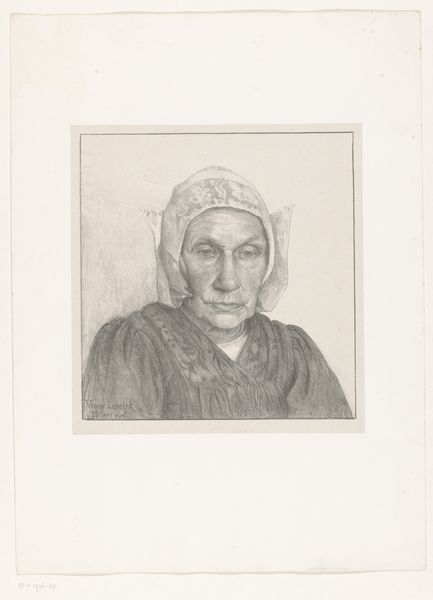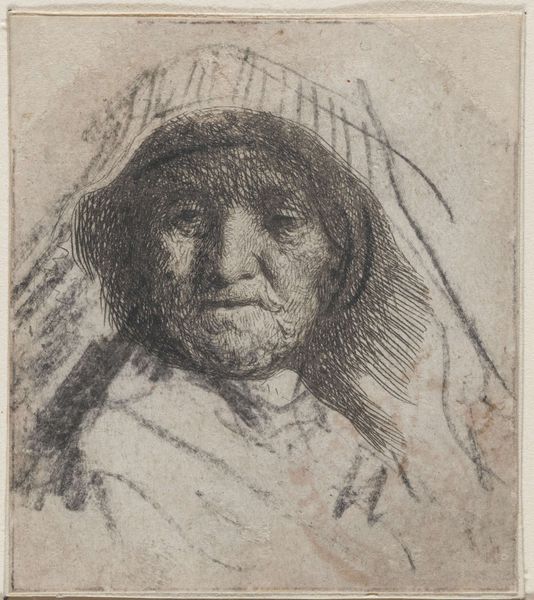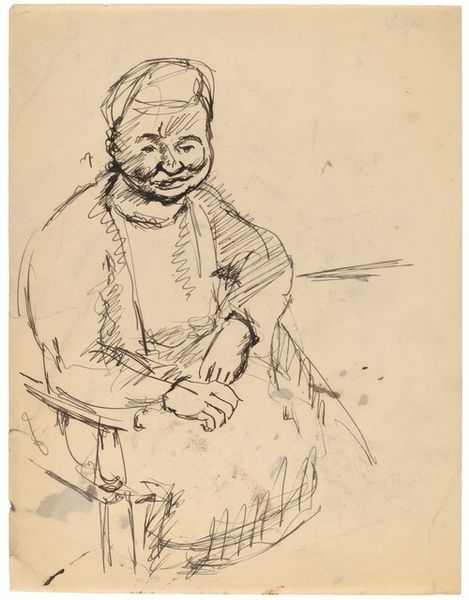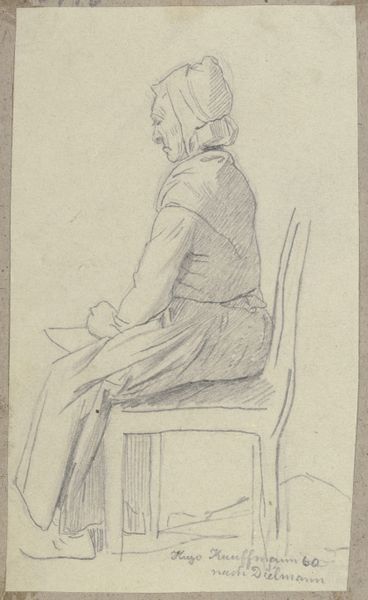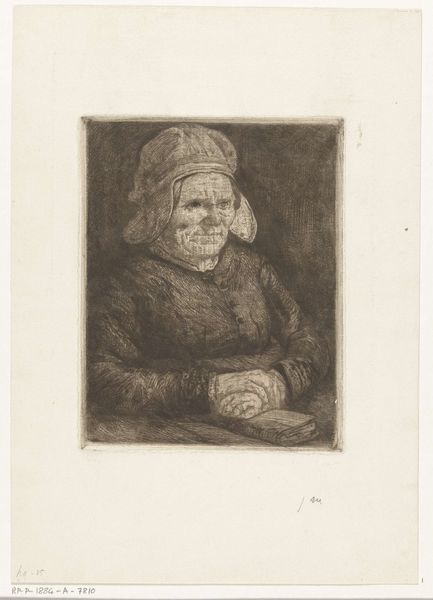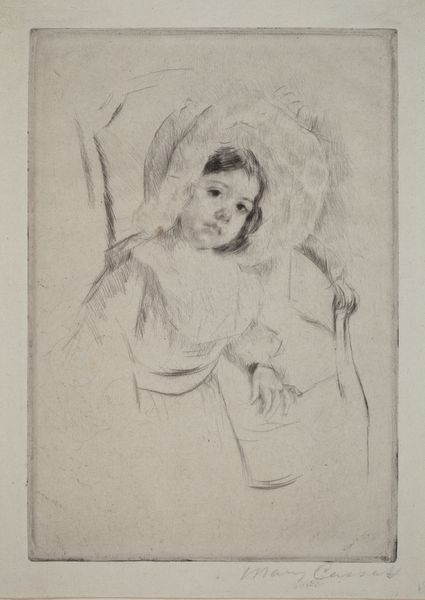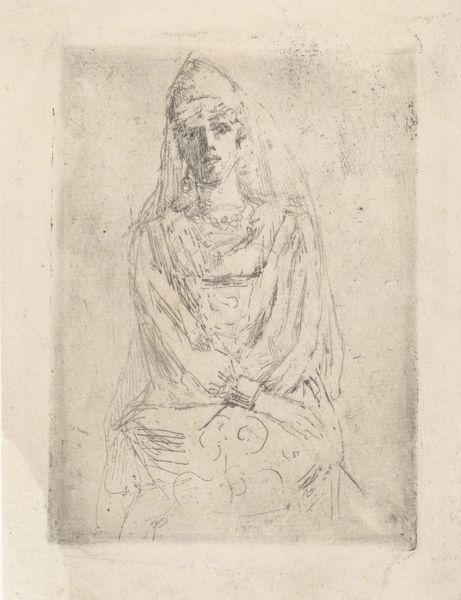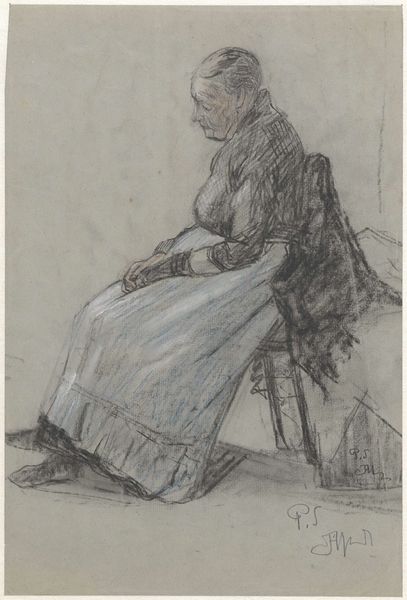
drawing
#
portrait
#
drawing
#
genre-painting
#
academic-art
#
realism
Dimensions: 460 mm (height) x 385 mm (width) (bladmaal)
Editor: Here we have Christen Købke's "Portrait of the Artist's Mother," a drawing from 1846. It has this immediate, intimate feeling... almost like a candid snapshot. What strikes you most about this piece? Curator: I think it's essential to consider this drawing within the framework of 19th-century Danish society. Consider the role of women, especially mothers, in a patriarchal structure. What expectations were placed on them, what sacrifices did they make? The portrait offers a quiet resistance, perhaps, to idealized motherhood. Editor: Resistance? How so? She seems rather...reserved. Curator: Look at her gaze. There's a certain strength and directness that transcends the expected demureness. Köbke's choice to depict her without embellishment, in simple clothing, removes her from the realm of pure symbolism and situates her as an individual. Who was she, beyond her role as a mother? What were her thoughts, her feelings, her experiences? The drawing becomes a platform to raise those questions. And questions about aging... it is very rare women are portrayed as aged and the way aging transforms us. Editor: That’s fascinating! I was so focused on the composition I hadn't really considered that perspective. Is there something particularly relevant from, say, feminist theory? Curator: Absolutely! Think about the male gaze and how it traditionally dictates the representation of women in art. Köbke, in portraying his mother with such honesty and without romanticization, subverts that gaze. It's not about how she looks, but who she is, in all her complexity. He is rendering justice in many senses... giving her dignity as a woman of substance and of certain age. Editor: So it's more than just a family portrait; it’s a subtle commentary on the position of women in society. I hadn't considered it that way at all. Curator: Precisely. It urges us to interrogate not only the artwork, but the social context in which it was created. It also urges other ways of loving in that period in time... Editor: I'll definitely keep that in mind. This has opened my eyes to a completely new way of interpreting portraits! Thank you.
Comments
No comments
Be the first to comment and join the conversation on the ultimate creative platform.
